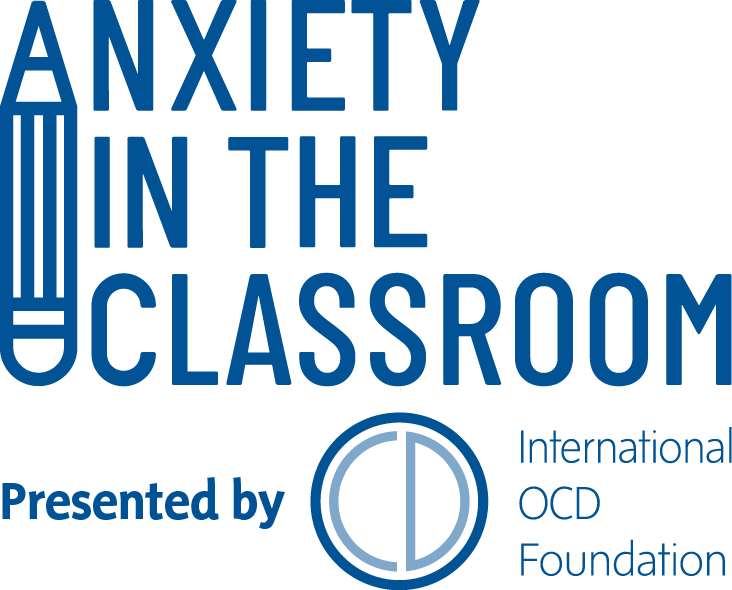How to Make a Community Referral for Treatment
School is a place for learning, growth, and development for all students. For students with anxiety and/or OCD, they may have needs that go beyond the scope of what can be provided in the school setting. Some students may already be connected with an outside support team, such as a therapist, psychiatrist, and/or support group. Others may not. In these cases, it might fall to school personnel to assist the student in getting connected to treatment and support.
Starting a Conversation about a Community Referral
The following are some suggestions for starting the conversation with a student and/or family seeking referral for treatment:
- Build upon your existing rapport with the student/family. Bring up things you may have noticed that are leading you to make this referral.
- Work on speaking without judgment. Avoid using black/white statements.
- Focus on stating facts and remaining neutral.
- Reiterate that it is not “weird” or “shameful” to have mental health concerns. Remind them that they are not character flaws or misbehavior on the part of the student.
- Recognize how scary it can be to hear that they might have a mental health condition. Provide space for the discussion of their concerns.
- Emphasize the family's strengths in this situation. For example, you could reflect to the parent/caregiver seeking a referral all the ways you recognize their love and care for their child.
- Acknowledge how difficult things may have been for the student/family since symptoms first started appearing. Remember — parents/families are often just as much in need of support as the student!
- Express encouragement to the student/family for seeking mental health treatment.
- Frame the referral in terms of a solution the student/family hopes to see. For example, you could say, “I can refer you to a doctor who helps children manage anxiety symptoms.”
- Try to identify the belief system(s) of the family to assist in making an adequate mental health referral (e.g., spiritual, cultural, and ideas about health).
- Explain what the family can expect as the next steps. For example, clarify if someone will provide them with a phone number, are expected to make an appointment, or will meet with a care coordinator.

How to find help
When it comes to making a referral itself, the IOCDF’s Resource Directory can be a great tool for school personnel. The Resource Directory contains listings of licensed therapists, clinics, support groups, and organizations that specialize in working with OCD and related disorders in youth. Anyone can search the Resource Directory by zip code, city/state, city/country, or full street address in order to find results close to them.
For BIPOC individuals seeking support for mental health concerns or racism-related stressors, consider making a mental health referral to a multicultural or racial trauma-informed therapist. This directory contains listings of licensed therapists, clinics, and organizations that specialize in culturally affirming mental health care.
Tips for Making a Community Referral
- Familiarize yourself with the resources within your community. This will help you make a more confident and informed referral.
- Continue to follow up with the student/family post-referral as appropriate (based on your role and relationship). Check in on their needs and how things are going.
- Remember to account for family members. Parent/family/sibling support groups are often helpful.
- Familiarize yourself with everyday experiences faced by BIPOC individuals and how racial trauma may emerge in the classroom so that you can make culturally informed mental health referrals.
- Consider developmental, cultural, and linguistic factors when making a mental health referral.
Some school personnel may have the time and space to do their own research and create a resource sheet for their school district. Other school personnel may not be able to do this. They may instead support the student/family in doing it on their own. In either case, the following tips can be helpful for school personnel, families, and students alike.
Tips for Choosing a Treatment Team
Some families may ask for guidance in choosing a treatment team for their child. It can be overwhelming to not know where to start, or how best to go about doing so. Remind families that they have every right to interview mental health professionals before making a decision about whom to see. If the professional is guarded, withholding of information, or angry at requests for more information, they should probably look elsewhere.
Click the plus sign below to view examples of good interview questions to ask when considering a mental health professional.
In rare cases, school may be the only place where the student receives professional support for their anxiety or OCD. If this is true for one of your students, the best course of action will be to work as a team to address the child’s school-related needs, while providing the student’s parent(s)/guardian(s) with resources for helping at home. To learn more, click here for a teamwork framework for school personnel and here for resources for families.



